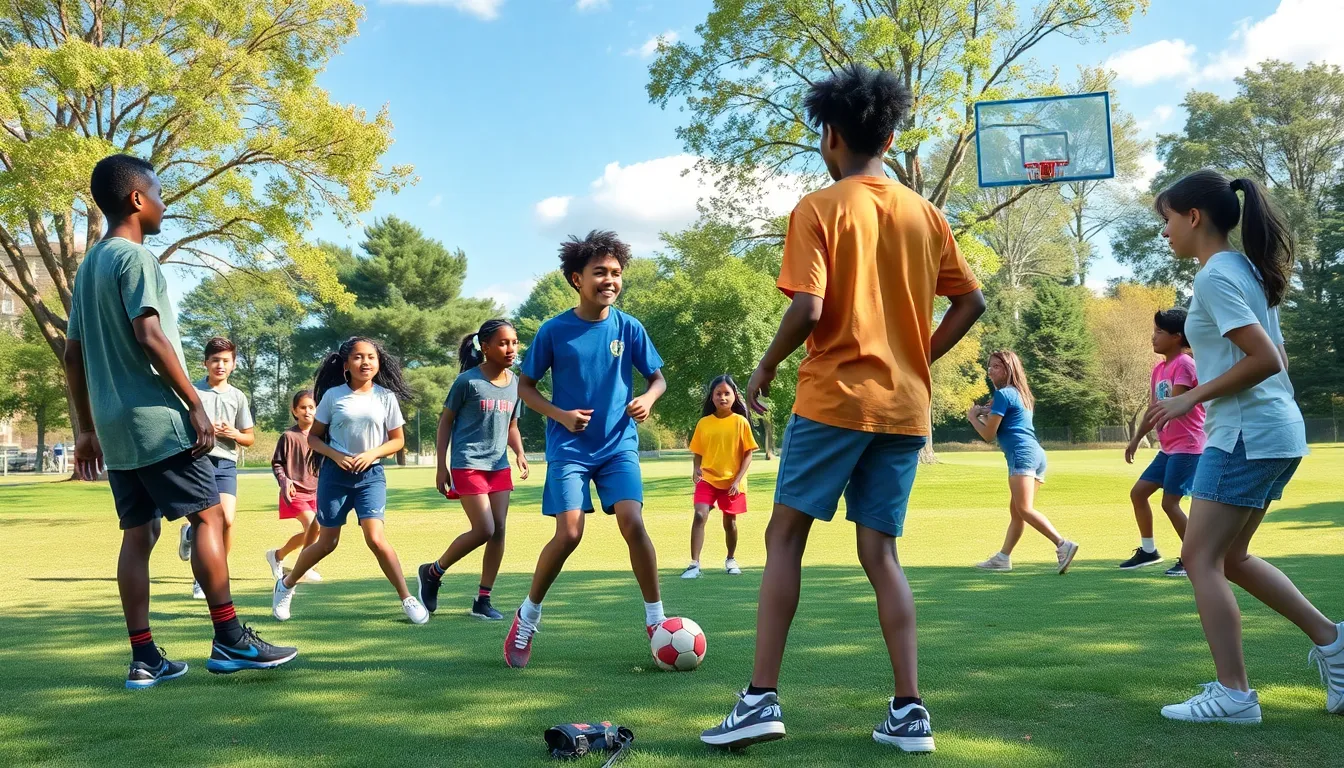In a world where couch surfing has become an Olympic sport, health and physical education stand as the ultimate game-changers. It’s not just about dodging gym class; it’s about building a foundation for a vibrant life. Imagine trading in those sedentary habits for a lifestyle that keeps both body and mind in peak condition.
Health and Physical Education
Health and physical education plays a crucial role in fostering a vibrant lifestyle. Engaging in regular physical activity and making informed health choices lays the foundation for lifelong well-being.
Benefits For Students
Students experience numerous advantages from health and physical education programs. Enhanced physical fitness improves their ability to focus and learn in academic settings. Increased participation in sports activities promotes teamwork and social skills among peers. Emotional resilience builds through overcoming challenges in physical activities. Regular exercise contributes to improved mood and reduces anxiety levels, creating a positive school environment. Furthermore, students who engage in these programs tend to develop healthier habits that carry into adulthood.
Contribution To Overall Well-being
Overall well-being relies heavily on the integration of health and physical education into daily routines. Maintaining physical fitness supports cardiovascular health and boosts the immune system, reducing the risk of chronic diseases. Furthermore, mental health benefits emerge from consistent physical activity; endorphins released during exercise enhance mood and decrease stress. Comprehensive health education empowers individuals with knowledge about nutrition and wellness, leading to healthier lifestyle choices. Additionally, social connections formed through group sports foster support systems that enhance emotional stability and promote a sense of belonging.
Curriculum Overview

Health and physical education curricula focus on promoting a holistic approach to wellness, aligning physical activity with comprehensive health knowledge.
Key Components Of Health Education
Health education emphasizes essential topics such as nutrition, mental health, substance abuse prevention, and disease prevention. It encourages students to understand the importance of balanced diets, exercise, and sleep. Engaging students in discussions about mental health builds emotional awareness and coping strategies. Teaching about substance abuse promotes informed decision-making. Additionally, lessons on disease prevention highlight vaccination, hygiene practices, and healthy lifestyle choices, equipping students with knowledge to support their well-being. Programs foster critical thinking and empower students to make positive lifestyle choices.
Key Components Of Physical Education
Physical education focuses on developing fundamental motor skills, promoting physical fitness, and encouraging lifelong engagement in physical activity. Students participate in team sports, individual exercises, and fitness assessments, which help build coordination, strength, and endurance. Exposure to various activities allows students to discover their interests and preferences, increasing the likelihood of maintaining an active lifestyle. Classes aim to teach teamwork, sportsmanship, and respect for others. Additionally, fitness education cultivates healthy habits by emphasizing the benefits of regular exercise and its impact on overall well-being.
Teaching Strategies
Engaging strategies enhance the effectiveness of health and physical education. Innovative methods cater to diverse learning styles and foster a supportive environment.
Innovative Approaches In Health Education
Utilizing technology engages students through interactive lessons. Incorporating gamification encourages participation while teaching vital health concepts. Case studies promote real-world applications of health issues, helping students connect theory to practice. Furthermore, project-based learning cultivates critical thinking, allowing students to explore topics deeply. Community involvement enriches the curriculum, providing practical experiences outside the classroom.
Effective Techniques In Physical Education
Adopting various instructional techniques meets the needs of all learners. Small group activities enhance collaboration and communication among students. Incorporating feedback during workouts fosters continuous improvement and personal growth. Fitness challenges motivate students to set and achieve individual goals. Integrating inclusive practices ensures every student feels valued, promoting a positive atmosphere for physical activity.
Challenges In Implementation
Health and physical education face several challenges that hinder effective implementation in schools.
Barriers To Health And Physical Education
Limited funding often restricts resources for programs. Schools with inadequate budgets struggle to provide quality equipment and trained staff. Time constraints also pose a challenge, as crowded curriculums leave little room for physical education classes. Additionally, a lack of support from parents or administrators can diminish the emphasis on these programs. Cultural attitudes towards physical activity may contribute to perceptions that prioritize academics over fitness. Some students experience barriers due to disabilities, which can prevent participation in standard physical education activities.
Solutions And Best Practices
Implementing school-wide wellness policies encourages a culture of health. Establishing community partnerships can provide additional resources and support. Integrating health and physical education into existing subjects can minimize scheduling conflicts. Utilizing technology enhances engagement through interactive lessons. Offering professional development for educators fosters effective teaching practices and inclusive environments. Regular assessments of student progress help identify areas needing improvement, ensuring tailored interventions. Engaging families in health initiatives promotes a holistic approach to student well-being.
Future Trends
The future of health and physical education increasingly involves innovative practices that enhance student engagement and well-being.
Integration Of Technology
Technology’s role in health and physical education continues to grow. Interactive apps offer personalized fitness plans, which track progress in real-time. Virtual reality experiences provide immersive environments for physical activity, making lessons more engaging. Educators utilize online platforms for health education, delivering resources that reach students beyond the classroom. Gamified learning encourages participation, as students earn rewards for meeting fitness goals. Data analytics facilitate tailored instructional approaches, ensuring that the needs of diverse learners are met. These advancements not only make physical education enjoyable but also equip students with lifelong skills for managing their health.
Focus On Mental Health
Mental health’s significance in health and physical education gains increasing recognition. Programs that connect physical fitness with emotional well-being empower students to understand their mental health needs. Initiatives like mindfulness practices and stress reduction techniques are being incorporated into curricula. Educators emphasize resilience, teaching students strategies to handle challenges effectively. Collaborative activities foster social connections, which enhance emotional support among peers. Comprehensive health education addresses mental health topics, breaking stigma and encouraging open discussions. By promoting mental well-being, schools create environments where students thrive academically and socially.
Conclusion
Prioritizing health and physical education is essential for nurturing well-rounded individuals. By fostering a culture of physical activity and wellness in schools, students can develop lifelong habits that enhance their overall well-being. The integration of innovative teaching strategies and technology further enriches the learning experience, making health education engaging and relevant.
Addressing the challenges faced in implementing these programs is crucial for creating supportive environments. As schools continue to adapt and evolve, the emphasis on mental health alongside physical fitness will play a pivotal role in shaping resilient and healthy future generations. Ultimately, a commitment to health and physical education paves the way for students to thrive academically and socially.

